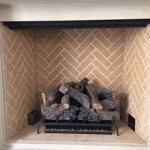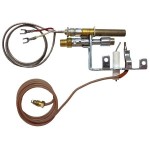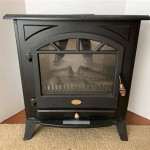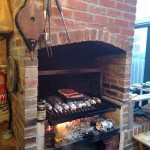```html
Outdoor Fireplaces: A Guide to Wood-Burning Models
Outdoor fireplaces provide a captivating focal point for patios, decks, and gardens, extending the enjoyment of outdoor spaces through cooler seasons. Among the various fuel options available, wood-burning fireplaces retain a classic appeal, offering a genuine sensory experience with the crackling sounds, aromatic scents, and radiant heat they generate. This article delves into the considerations involved in selecting, installing, and maintaining wood-burning outdoor fireplaces.
The allure of a wood-burning fireplace lies in its ability to create a warm and inviting atmosphere. The natural ambiance produced by a real fire is difficult to replicate with other heating methods. While gas and electric options offer convenience, the authenticity of a wood-burning fire remains a significant draw for many homeowners.
Key Considerations Before Installation
Before investing in a wood-burning outdoor fireplace, it is crucial to address several preliminary factors. These considerations are vital to ensure safety, compliance with local regulations, and optimal performance of the fireplace.
Local Regulations and Permits: The first step involves researching and adhering to local building codes and regulations regarding outdoor fireplaces. Many municipalities have specific requirements pertaining to setbacks from property lines, chimney height, and emission standards. Some areas may even restrict the use of wood-burning fireplaces altogether due to air quality concerns. Obtaining the necessary permits before commencing installation is essential to avoid potential fines or legal issues.
Location and Clearance: Selecting an appropriate location for the fireplace is paramount. The area should be level, stable, and free from flammable materials such as dry leaves, branches, or overgrown vegetation. Maintain adequate clearance from structures, including the house, fences, and overhead trees. Manufacturers typically specify minimum clearance requirements in their installation manuals. It is generally recommended to allow at least 10 feet of clearance from any combustible materials.
Wind Direction: Prevailing wind patterns should be considered when determining the fireplace's orientation. Positioning the fireplace in a way that minimizes exposure to strong winds can prevent excessive smoke blowback and ensure a more consistent and enjoyable fire. Windbreaks, such as strategically placed shrubs or fences, can also help to mitigate wind effects.
Chimney Height and Design: The chimney is a critical component of a wood-burning fireplace, responsible for venting smoke and combustion gases safely away from the surrounding area. The chimney height should be sufficient to provide adequate draft and prevent smoke from lingering near the ground or entering nearby buildings. Local building codes often dictate minimum chimney height requirements based on the proximity to structures and roof lines. The chimney design should also incorporate a spark arrestor to prevent embers from escaping and potentially igniting nearby flammable materials.
Foundation and Support: A solid and stable foundation is essential to support the weight of the fireplace. Depending on the size and type of fireplace, a concrete slab, a compacted gravel base, or a reinforced brick or stone foundation may be necessary. The foundation should be level and able to withstand the expected load without settling or cracking.
Types of Wood-Burning Outdoor Fireplaces
The market offers a diverse range of wood-burning outdoor fireplaces, each with its own distinct features, advantages, and disadvantages. Understanding the different types available can help homeowners make an informed decision based on their specific needs and preferences.
Pre-Built Fireplaces: These fireplaces are manufactured off-site and arrive at the installation location fully assembled or in modular sections that are easily connected. Pre-built fireplaces are typically constructed from concrete, brick, or stone and offer a convenient and relatively quick installation process. They are available in various sizes, styles, and finishes to complement different outdoor spaces. However, pre-built fireplaces may offer less customization options compared to site-built models.
Fireplace Kits: Fireplace kits provide a middle ground between pre-built and site-built options. These kits include all the necessary materials and components, such as brick, stone, mortar, and a firebox, along with detailed instructions for assembly. Fireplace kits allow for some degree of customization while still simplifying the construction process. They are a good option for homeowners who are comfortable with basic construction skills but prefer not to source all the materials individually.
Site-Built Fireplaces: Site-built fireplaces are constructed entirely on-site from individual materials, such as brick, stone, or concrete blocks. This option offers the greatest degree of customization, allowing homeowners to create a fireplace that perfectly matches their aesthetic preferences and spatial requirements. However, site-built fireplaces require significant construction expertise and can be more time-consuming and expensive to build than pre-built or kit options.
Chiminea: Chimineas are freestanding, clay or metal fireplaces with a distinctive bulbous shape and a narrow chimney. Originating in Mexico, chimineas are a popular choice for smaller outdoor spaces due to their compact size and portability. They provide warmth and ambiance but may not generate as much heat as larger fireplace models. It is important to place a chiminea on a non-combustible surface and keep it away from flammable materials.
Fire Pits: While technically not fireplaces with chimneys, fire pits often serve a similar function as outdoor wood-burning spaces. They offer a more communal feel, with seating typically arranged around the perimeter. Fire pits can be constructed from various materials, including stone, brick, concrete, or metal. Safety precautions are particularly important with fire pits, as they lack the enclosed firebox and chimney of a traditional fireplace. Ensure adequate clearance from flammable materials and supervise the fire closely.
Safety and Maintenance
Operating and maintaining a wood-burning outdoor fireplace safely is crucial to prevent accidents and ensure its longevity.
Burning Seasoned Wood: Using seasoned wood is essential for efficient combustion and reduced smoke production. Seasoned wood has a moisture content of 20% or less, which allows it to burn hotter and cleaner than green or freshly cut wood. Burning green wood results in excessive smoke, creosote buildup in the chimney, and a reduced heat output. Seasoned wood should be stored in a dry, well-ventilated area, away from the elements.
Proper Fire Management: Start fires with kindling and gradually add larger pieces of wood. Avoid overfilling the firebox, as this can lead to excessive smoke and potential hazards. Never use flammable liquids, such as gasoline or kerosene, to start or accelerate a fire. Use a poker or tongs to adjust the firewood as needed and maintain a safe and controlled burn.
Supervision and Extinguishment: Never leave a fire unattended. Supervise the fire closely at all times, especially when children or pets are present. Keep a fire extinguisher or a water hose nearby in case of emergencies. Before leaving the area or going to bed, ensure that the fire is completely extinguished. Douse the embers with water and stir them thoroughly until they are cold to the touch.
Chimney Cleaning and Inspection: Creosote, a flammable byproduct of wood combustion, can accumulate in the chimney over time. Creosote buildup increases the risk of chimney fires. It is recommended to have the chimney professionally inspected and cleaned at least once a year, or more frequently if the fireplace is used regularly. A qualified chimney sweep can remove creosote and identify any potential problems with the chimney structure.
Regular Maintenance: Inspect the fireplace regularly for cracks, loose bricks, or other signs of damage. Repair any issues promptly to prevent further deterioration. Clean the firebox regularly to remove ashes and debris. Protect the fireplace from the elements during the off-season by covering it with a waterproof tarp or a custom-fitted cover.
By carefully considering these factors, homeowners can create a beautiful and functional outdoor space centered around the warmth and ambiance of a wood-burning fireplace. Remember to prioritize safety, comply with local regulations, and maintain the fireplace properly to enjoy its benefits for years to come.
```
Outdoor Fireplaces Charlotte Fireplace Design Coogans Build

42 Castlewood Outdoor Wood Burning Fireplace Fine S Gas

Outdoor Fireplace Kits Stonewood S Cape Cod Ma Nh Ct

Outdoor Fireplace Builder Richmond Va Dreams

Outdoor Wood Fireplaces Jetmaster

Outdoor Wood Burning Fireplace

Gas Logs Vs Wood Burning Outdoor Fireplaces Green Okie

Cal Flame Stone Veneer Gas Outdoor Fireplace Frp908 3 Modern Ions

Outdoor Fireplace Kits Masonry Stone

Suoy Curtis 56 69 In Wood Burning Outdoor Fireplace With Broe Highlights 169476 The Home Depot
Related Posts








